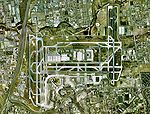Air Canada Flight 189
1978 in CanadaAccidents and incidents involving the McDonnell Douglas DC-9Air Canada accidents and incidentsAirliner accidents and incidents caused by mechanical failureAirliner accidents and incidents caused by pilot error ... and 6 more
Airliner accidents and incidents in CanadaAviation accidents and incidents in 1978June 1978 events in CanadaToronto Pearson International AirportUse Canadian English from March 2016Use mdy dates from March 2016

Air Canada Flight 189 was an Air Canada flight from Ottawa to Vancouver via Toronto and Winnipeg. On June 26, 1978, the McDonnell Douglas DC-9 operating the flight crashed on takeoff in Toronto, killing two passengers.
Excerpt from the Wikipedia article Air Canada Flight 189 (License: CC BY-SA 3.0, Authors, Images).Air Canada Flight 189
Etobicoke Creek Trail, Mississauga
Geographical coordinates (GPS) Address Nearby Places Show on map
Geographical coordinates (GPS)
| Latitude | Longitude |
|---|---|
| N 43.659722222222 ° | E -79.625555555556 ° |
Address
Etobicoke Creek Trail
Etobicoke Creek Trail
L4W 5P6 Mississauga
Ontario, Canada
Open on Google Maps









